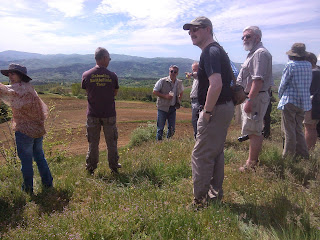HISTORIC BACKGROUND OF THE BATTLE
Following the Peace Treaty concluded in London on May 17, 1913 between the Balkan States and Turkey, it was time they settled up their disputes concerning the partition of land in the Balkans previously occupied by Turkey.
At that time Bulgaria aimed at expanding to the whole area of Macedonia. Serbia and Bulgaria had signed an agreement for the partition of land; Serbia, however, did not admit the agreement any long since it considered
that Albania would be included in its share, gaining thus an exit to the Adriatic Sea; the establishment of the Albanian state, though, set a limit to its expansion westwards. Bulgaria, on the other hand, insisted on taking the agreed territories. Serbia recognized the rights of Greece on these territories liberated by the Hellenic Army; however,Bulgaria aimed at expelling Greece from this area in order to establish the great Bulgaria that resulted from the Peace Treaty of Aghios Stefanos signed in 1878.
On May 19, 1913 Greece and Serbia signed a defensive alliance. Bulgaria had already decided to surprisingly attack against the Hellenic and Serbian Armies.
Thus, the Bulgarians implementing their plan, started moving their troops towards Macedonia and the Serbian-Bulgarian border. By mid June the movements had been implemented. On June 16-17, 1913 the Bulgarian Army, without prior declaration of war, attacked against the Serbian and Hellenic positions and on June 17, it occupied the line from Vertiskos to Polikastro. At the same time, Bulgaria planed a general attack on June 19 to occupy Thessaloniki. The Hellenic Army, though, assaulted an attack in the morning of June 19 impeding the Bulgarian Army thus forcing it to defence.
The Hellenic forces deployed were the VI Division at LAGINA village, the I Division at PROFITIS village and the VII Division at
ARETHOUSA. The Bulgarians had placed 20 battalions to defend LAHANA.
The Hellenic attack began on June 19, 1913. The Bulgarian advance guards are repelled and they are forced to withdraw to the main defensive position. During the first day the VI Division approached the heights GERMANIKO and DICHALO, the I Division OSSA village and the VII Division the area of SKEPASTO.
The battle began in the morning of June 20. During the day the Hellenic Divisions were engaged in fierce fights in order to approach the main Bulgarian position to an assault distance. The Bulgarian fires were extremely lethal whereas the ground did not provide cover, and the Hellenic forces were tied down. In the meantime the VII Division continued its movement and at 1300 hrs it occupied NIGRITA. The fighters faced a horrible spectacle. The whole city was on fire and the streets covered with the dead bodies of the inhabitants the Bulgarians left behind. The Hellenic Army liberated a dead city.
On June 21, the battle reached its peak; a series of assaults took place with the use of bayonets. The Hellenic Army, advancing with the Commanders of the Regiments and all the Officers in the front line, reached in an assault distance and fearlesly rushed with the bayonets. The bayonet defeated
the fire and at 1400 hrs in the afternoon Lahanas surrendered. The greater part of the Bulgarian Army fled to Serres, and it would have suffered a complete crush, if the VII Division, on its own initiative, had occupied the bridge of Strimonas river and cut it off.
Two thousand nine hundred (2900) greek bodies remained for ever in the soil of Lahanas and they are since then sleeples guards and defendors of a national rampart. The Bulgarian side had lots of deads and 2500 prisoners of war. 1300 weapons, 16 howitzers and large quantities of materiel were captured. The historic titanic struggle at LAHANAS resulted in opening the gate for the liberation of the rest of MACEDONIA and THRACE.

No comments:
Post a Comment
Please write your comment: